The Sony Alpha a7S III was announced on July 28th, 2020 almost 5 years after the Sony a7S II hit the shelves. Like all of Sony’s a7S Series of cameras, its main focus is video and low light photography.
The Sony Alpha a7 IV was announced on October 21st, 2021 but unlike the a7S III which is video focused, the a7IV is a good allrounder that is competent at shooting both stills and video. This has helped to make it a very popular camera for event photographers.
If you are trying to decide which of these cameras to buy, or perhaps wondering if one can complement the other, then this article will explain all of the key differences that you need to know.

Table of Contents[Hide][Show]
Just before we dive into the details, here’s a quick list of the key features that they do share in common:
- Max 10 FPS (Frames Per Second) drive speed
- 1/8000 to 30 sec shutter speed
- RAW, JPEG and HEIF file options
- 5.5 stops of in-body stabilization
- New redesigned touch friendly menu system
- Full sized HDMI port
- Microphone input and headphone output (3.5mm)
- Digital audio interface and 24-bit 4 channels recording
- Stereo microphone and speaker
- Flash sync speed 1/250 s (35 mm full frame), 1/320 s (APS-C)
- USB charging
- Weather sealed body
- NP-FZ100 battery
Key Spec Comparison
First let’s just take a quick look at the key specifications for each Alpha camera. You’ll also find a complete specification comparison table at the end of this article.
| Specification | Sony A7 IV | Sony A7S III |
|---|---|---|
| Sensor: | 33.0MP 35mm full-frame, back-illuminated Exmor R CMOS Sensor | 12.1 MP 35mm full-frame, back-illuminated Exmor R CMOS Sensor |
| Processor: | BIONZ XR | BIONZ XR |
| Dynamic Range: | 15 Stops | 15 Stops |
| ISO Sensitivity: | Still images: ISO 100-51200 (expandable ISO 50 to 204800), AUTO (ISO 100-12800). Movie: ISO 100-51200 equivalent (expandable ISO 102400), AUTO (ISO 100-12800) | Still images: ISO 80-102400 (expandable: ISO 40-409600). Movie: ISO 80-102400 (expandable: ISO 80-409600) |
| Max Frames Per Second: | 10 FPS | 10 FPS |
| Autofocus Points: | 35 mm full frame: 759 points (phase-detection AF), APS-C mode with FF lens: 713 points (phase-detection AF), with APS-C lens: 575 points (phase-detection AF) / 425 points (contrast-detection AF) | 35-mm full frame: 759 points (phase-detection AF), APS-C mode with FF lens: 345 points (phase-detection AF), with APS-C lens: 285 points (phase-detection AF) / 425 points (contrast-detection AF) |
| Eye Autofocus: | Stills: Human, Animals, Birds. Video: Humans, Animals, Birds | Stills: Humans, Animals. Video: Humans |
| Stabilization (IBIS): | 5-axis (5.5-stops) | 5-axis (5.5-stops) |
| Video Resolution Max: | 4K 30p (no crop), 4K 60p in Super35/APS-C mode (1.5x crop). | 4K at 120p (1.1x crop), and 4K up to 60p without crop. |
| Recording Formats: | XAVC S, XAVC HS | XAVC S, XAVC HS |
| Picture Profiles: | Yes (Off / PP1-PP11) Parameters: Black level, Gamma (Movie, Still, S-Cinetone, Cine1-4, ITU709, ITU709 [800%], S-Log2, S-Log3, HLG, HLG1-3), Black Gamma, Knee, Color Mode, Saturation, Color Phase, Color Depth, Detail, Copy, Reset | Yes (Off/PP1-PP10) Parameters: Black level, Gamma (Movie, Still, S-Cinetone, Cine1-4, ITU709, ITU709 [800%], S-Log2, S-Log3, HLG, HLG1-3), Black Gamma, Knee, Color Mode, Saturation, Color Phase, Color Depth, Detail, Copy, Reset |
| Electronic Viewfinder (EVF): | 3.68 million dots | 9.44 million dots |
| Display (LCD): | 1.04 million dots, Vari-Angle touch LCD. | 1.44 million dots, Vari-Angle touch LCD. |
| Image Buffer: | JPEG Extra fine L: over 1000 frames, JPEG Fine L: over 1000 frames, JPEG Standard L: over 1000 frames, RAW: over 1000 frames, RAW & JPEG: over 1000 frames, RAW (Lossless Compressed): over 1000 frames, RAW (Lossless Compressed) & JPEG: over 1000 frames, RAW (Uncompressed): over 1000 frames, RAW (Uncompressed) & JPEG: 828 frames | JPEG Extra fine L: over 1000 frames, JPEG Fine L: over 1000 frames, JPEG Standard L: over 1000 frames, RAW: over 1000 frames, RAW & JPG: over 1000 frames, RAW (Uncompressed): over 1000 frames, RAW (Uncompressed) & JPG: over 1000 frames |
| Shutter Speed: | 1/8000 to 30 sec | 1/8000 to 30 sec |
| Memory Card Slots: | Two memory card slots. CFexpress Type A + UHS-II/I SD cards are supported in Slot 1. Only UHS II/I SD cards are supported in slot 2. | Two memory card slots. CFexpress Type A + UHS-II/I SD cards are supported in both slots |
| Wireless: | Wi-Fi Compatible, (5GHz and 2.4GHz band) | (5GHz and 2.4GHz band) |
| Ports: | Yes, Micro USB (SuperSpeed USB (USB 3.2) compatible. Full-size HDMI. | Yes, Micro USB (SuperSpeed USB (USB 3.2) compatible. Full-size HDMI. |
| Battery Life Stills: | Approx. 520 shots (Viewfinder) / approx. 580 shots (LCD monitor) (CIPA standard) | Approx. 510 shots (Viewfinder) / Approx. 600 shots (LCD monitor) (CIPA standard) |
| Battery Life Video: | Actual recording: Approx. 100 min (Viewfinder) / Approx. 110 min (LCD monitor) (CIPA standard). Continuous recording: Approx. 130 min (Viewfinder) / Approx. 135 min (LCD monitor) (CIPA standard) | Actual recording: Approx. 80 min (Viewfinder)/Approx. 95 min (LCD monitor) (CIPA standard). Continuous recording: Approx. 130 min (Viewfinder) / Approx. 135 min (LCD monitor) (CIPA standard) |
| Weight with battery & memory card: | Approx. 658 g (approx. 1 lb 7.3 oz) | Approx. 699 g (approx. 1 lb 8.7 oz) |
| Price (MRRP): | $2,498.00 / £2,399.00 | $3,498.00 / £3,799.00 |
Sensor and ISO Range
Although both cameras feature a similar Full-Frame Backside-illuminated (BSI) Exmor R CMOS sensor and BIONZ XR processing engine, the number of megapixels are not the same.
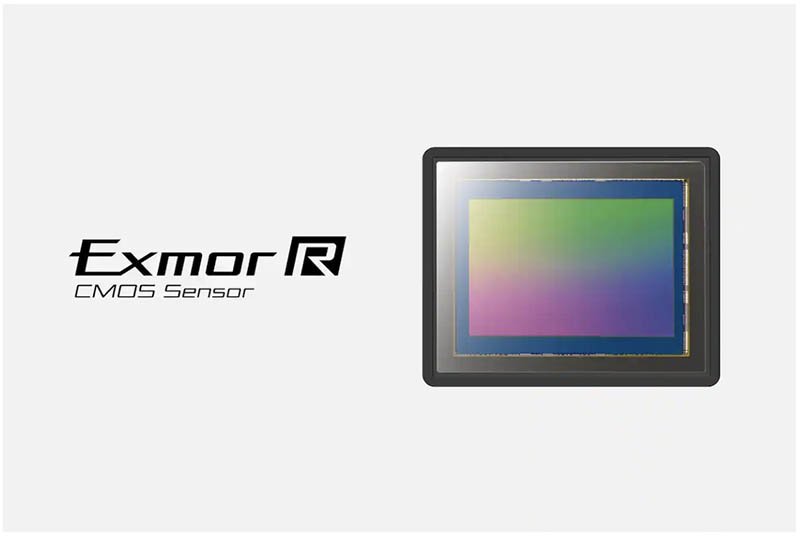
The Sony a7IV boasts the higher number of megapixels at 33.0MP, whereas the a7S III sports just 12.1 MP.
However, the lower megapixel count on the a7S III allows it to take full advantage of the large pixels and BSI copper wiring structure to more than double the ISO sensitivity.
| A7 IV | A7S III | |
|---|---|---|
| Normal ISO (Stills): | 100-51200 | 80-102400 |
| Expanded ISO (Stills): | 50 to 204800 | 40-409600 |
| Normal ISO (Movies): | 100-51200 | 80-102400 |
| Expanded ISO (Movies): | 100-102400 | 80-409600 |
Both cameras feature the BIONZ XR processing engine that boosts speed by up to 8x compared with the BIONZ X engine found in the a7III and a7SII. This helps to improve image quality, color reproduction, subject tracking and continuous shooting performance.
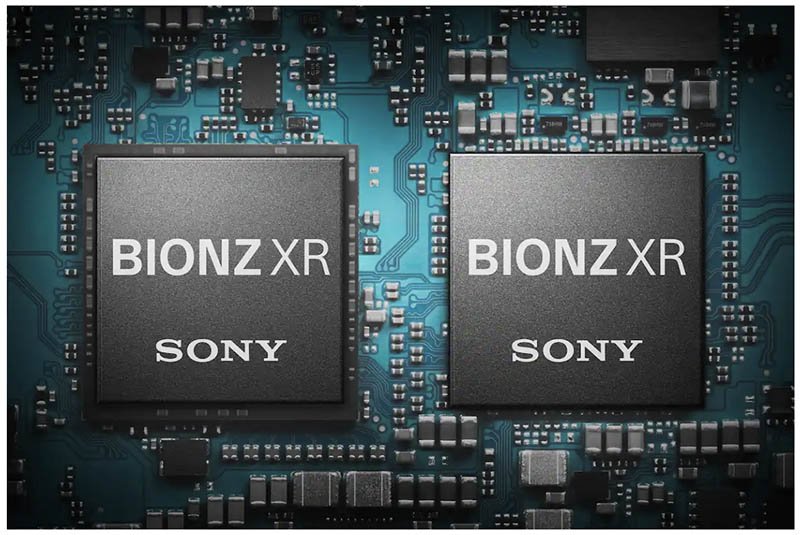
Still Image Recording Formats
Both cameras support RAW (compressed/uncompressed), JPEG and HEIF file types but the a7 IV goes one step further by allowing you to record in a lossless RAW.
Lossless Compression provides the maximum processing flexibility, but this comes at the expense of drive speed, because the maximum burst rate drops from 10 to around 6 fps if you use it.
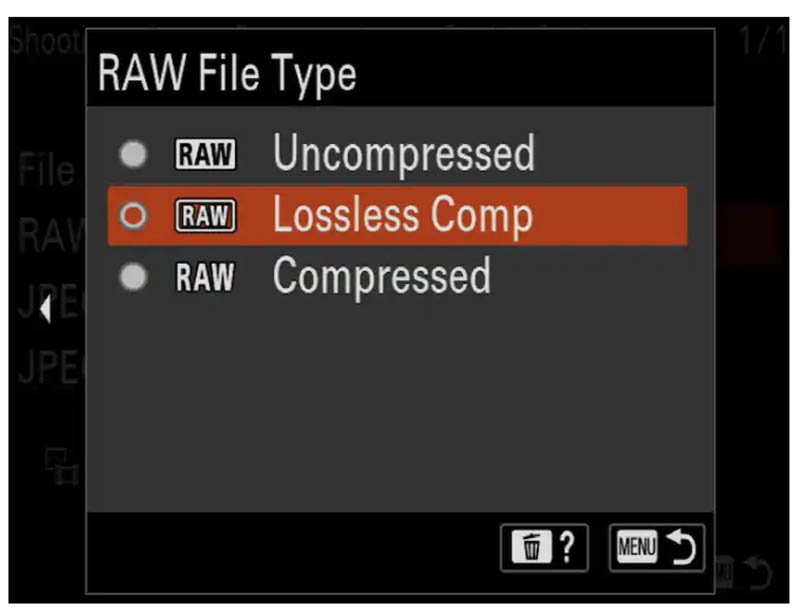
4:3 and 1:1 image aspect ratio options are available for both cameras, along with the standard 3:2 and 16:9 options.
APS-C / Super 35 Mode
Both cameras feature an APS-C / Super 35 Mode allowing you to shoot using full-frame lenses with a crop factor of 1.5x, or make use of an APS-C lens.
Thanks to the larger 33 megapixel sensor in the a7 IV, when you enable APS-C mode on this camera the maximum image size will be 14 megapixels (4608 x 3072).
With the smaller 12.1 megapixel sensor in the a7S III the maximum image size will be 5.1 megapixels (2768 x 1848) when shooting in APS-C / Super 35 Mode.
Video
Probably the most important and most likely interesting difference between these two cameras is their video capabilities.
The a7S III has been designed to shoot video so it really does excel here, but the a7 IV is no slouch.
The a7S III is capable of recording 4k 120p (with a small 1.1x crop), and 4k up to 60p without a crop.
The a7IV can record up to 4k 30p without a crop, but if you want to shoot in 4k 60p this is only possible in Super 35 / APS-C Mode and that will introduce a 1.5x crop.
If you are happy shooting in Full HD then the a7S III can shoot at up to 240fps, versus 120fps on the a7IV when shooting in NTSC mode.
Both cameras share many other video features including:
- 10-bit 4:2:2 (internal and via HDMI)
- XAVC S: MPEG-4 AVC/H.264, XAVC HS: MPEG-H HEVC/H.265
- Up to 600Mbps (with ALL-Intra codec)
- S-Log2, S-Log3, HLG, S-Cinetone
- Creative Looks
- Shockless WB
- 1-7 AF transition speeds
- Flexible Exposure Mode
- No recording limitation thanks to effective heat-dissipation design to help prevent overheating
Note: The a7IV included support for the S-Cinetone picture profile on day one, but the a7S III only received S-Cinetone support via firmware update version 2.0.
The a7S III can also record 16-bit RAW video (up to 60p) when used with the Atomos Ninja V.
Being the newer camera of the two the a7 IV does come with a few new video specific features that you won’t find in the a7S III, let’s take a look at these now.
Breathing Compensation
The a7IV trumps the a7S III with one new feature called Breathing Compensation.
This mode basically crops and resizes the video to cancel-out any change in a lens’s angle-of-view (AoV) as it focuses. In other words, there’s no distracting change of framing as you refocus.
However, this mode only works with select Sony lenses because the camera needs a profile of the breathing characteristics. You can find the full list of lenses that support this function on Sony’s website here.
Here’s a video from Sony to demonstrate Breathing Compensation.
Focus Map
Another feature that you won’t find in the a7S III but you will in the a7 IV is the Focus Map. This lets you easily visualize depth of field when you’re shooting video. When in use, a focus (depth map) is overlaid on a display of the live view in real time, so you can easily see which areas are in or out of focus.
Video AF Assist
Inherited from the Cinema Line FX6, the AF Assist function smoothly switches between auto and manual focus. Rack focusing is possible by rotating the focus ring to switch into MF and shift focus to a different subject, with AF resumed when ring rotation stops. You’ll find AF Assist in the a7 IV but not the a7S III.
Shot Marks
Two types of shot marks, used as “essence marks” or flags, can be added to recorded movie footage shot with the a7IV to mark favorite takes or scenes, and the main dial can be used to quickly navigate from one mark to the next during playback. You can access these shot marks later in post using Sony’s Catalyst Browse.

Stabilization
Both cameras feature 5 axis in-body image stabilization (IBIS) with 5.5EV of correction.

Both cameras also feature an active stabilization mode that adds digital correction on top of the in-body stabilization, however there is a slight crop of around 1.1x.
Both cameras also record gyro and lens data as metadata, you can use Sony Catalyst Browse/Prepare software to further smooth camera shake and make adjustments to image stabilization even after shooting.
Autofocus
Both cameras sport a very similar autofocus system but there are some small but important differences.
Phase-Detection Points
Each camera features 759 phase-detection AF points and 425 contrast-detection points when shooting in full-frame, this covers 94% of the image area
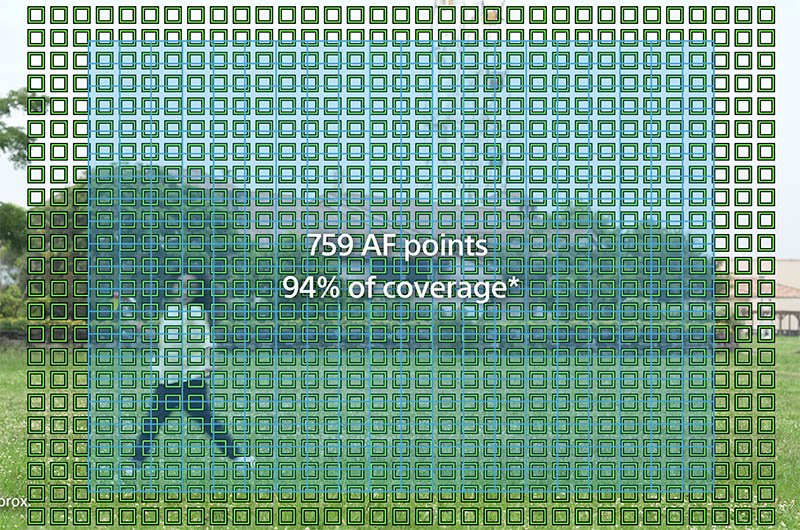
However, when shooting in APS-C mode with a full frame lens the number of phase detection points drops to 713 on the a7IV and 345 on the a7S III. Attaching an APS-C lens brings this number down to 575 on the a7IV and 285 on the a7S III.
Phase Detection Autofocus (PDAF)
The a7S III only supports phase detection down to F11, after this the slower contrast detection takes over and the focus is locked to the setting in the first shot when shooting in any of the continuous drive modes.
With the a7IV phase detection is supported all the way down to F22 which can be helpful if you need to focus using smaller apertures.
Lowlight AF Performance
When it comes to auto focusing in low light the Sony a7S III has a two stop advantage over the a7IV:
- A7S III: EV-6 to EV20 (ISO 100 equivalent with F2.0 lens attached)
- A7 IV: EV-4 to EV20 (ISO100 equivalent with F2.0 lens attached)
AI-based Real-time Eye AF and Real-time Tracking
Both cameras support Real-time Eye AF and Real-time tracking but the a7 IV does come out on top here as it also supports Real-time Eye AF for birds whereas the a7S III is limited to animals.
| Real-time Eye AF | A7 IV | A7S III |
|---|---|---|
| Photos | Humans / Animals / Birds | Humans / Animals |
| Video | Humans / Animals / Birds | Humans |
The a7 IV is also able to track animal eyes whilst shooting video but the a7S III is limited to humans only. This could be a big deal if you are a wildlife videographer.
Shutter
Both the a7IV and a7S III feature a Mechanical shutter / Electronic shutter with a shutter speed of 1/8000 to 30s for stills and 1/8000 to 1/4 for movies.
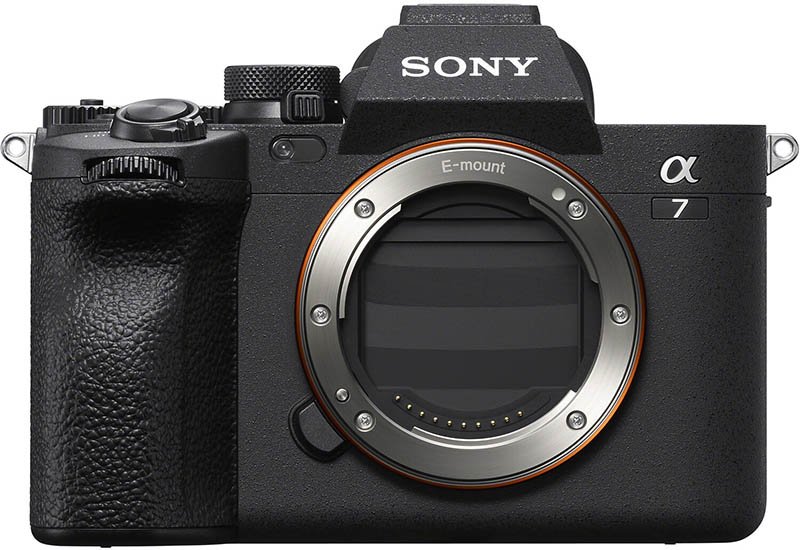
The a7IV sports an anti-dust shutter that closes the shutter to help keep dust from the sensor when changing lenses, this is not available on the a7S III.
The a7IV also supports Variable Shutter that lets you manually adjust the shutter speed to check the impact of flickering on the monitor. This is supported whilst shooting both stills and video.
Camera Body & Controls
Both bodies share a very similar design and control layouts and they have also inherited a lot of ergonomic improvements over their respective predecessors. These include a slightly larger body and grip, along with larger buttons like the AF-ON, Custom Buttons and Joystick. Tactile feedback has also been improved.
The a7S III weights approx. 699 g (1 lb 8.7 oz) vs approx. 658 g (1 lb 7.3 oz) for the a7IV, making the a7IV around 41 g lighter although the body is a little wider.
The dimensions are as follows:
- A7S III: 128.9 x 96.9 x 80.8 mm, 699 g (1 lb 8.7 oz)
- A7 IV: 131.3 x 96.4 x 79.8 mm, 658 g (1 lb 7.3 oz)
Sony A7S III
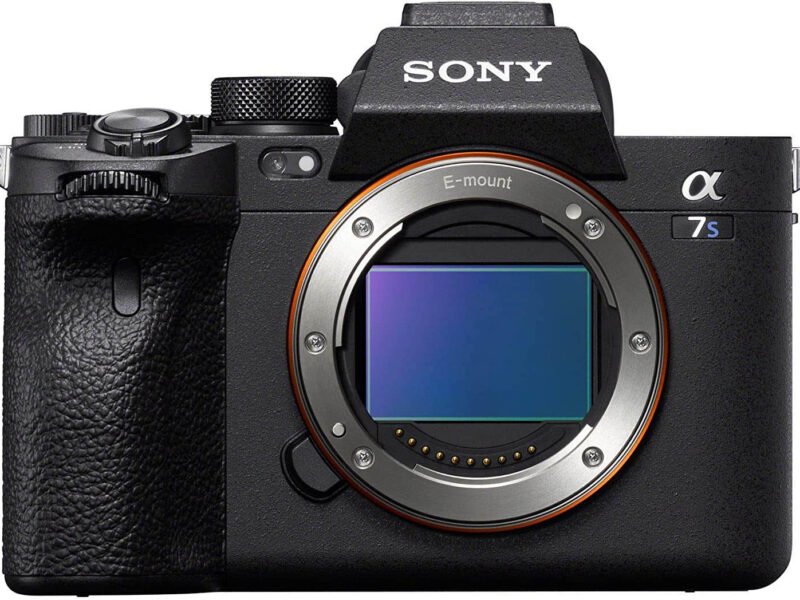
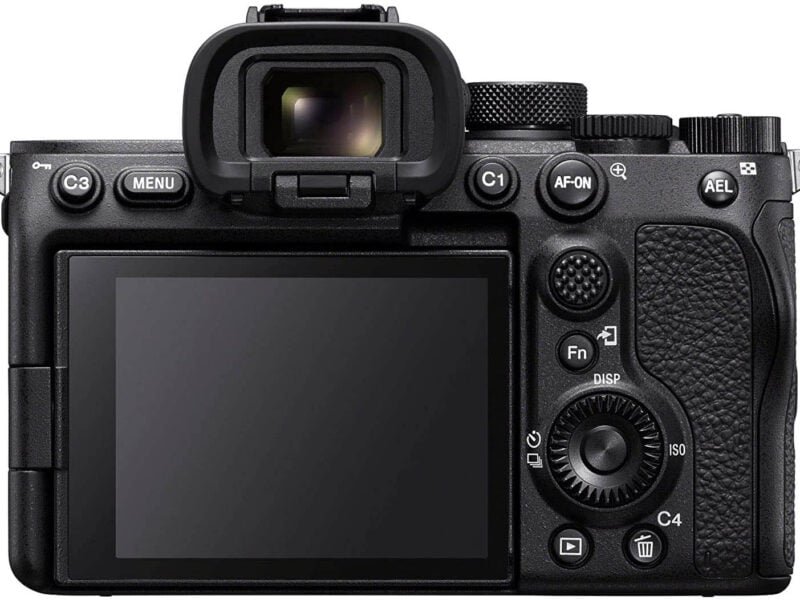


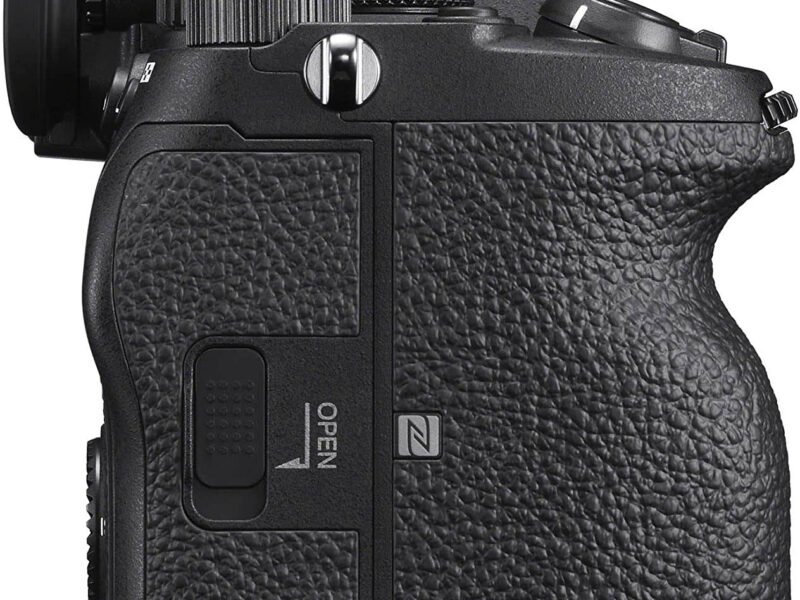


Sony A7 IV

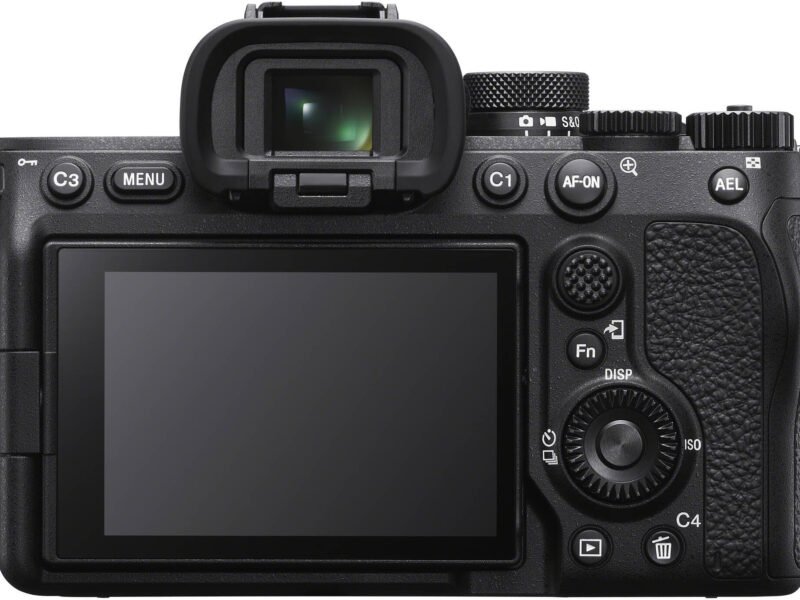
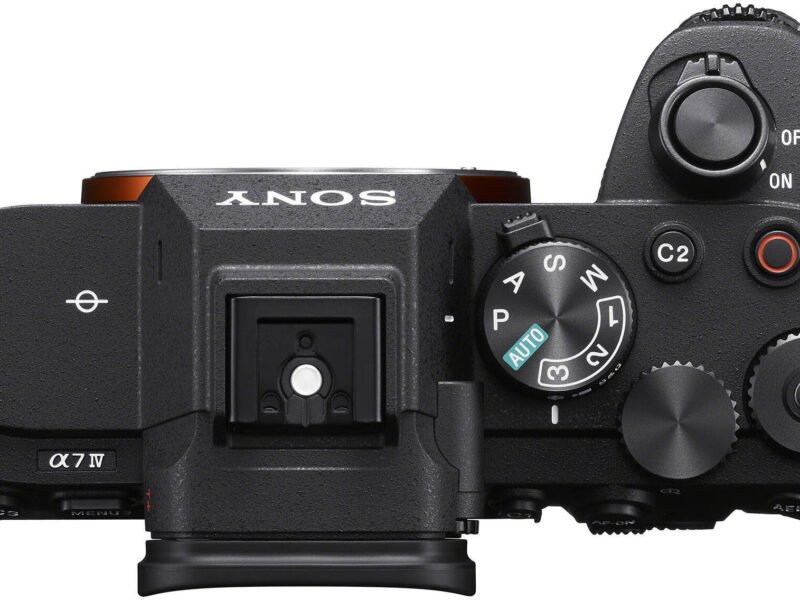
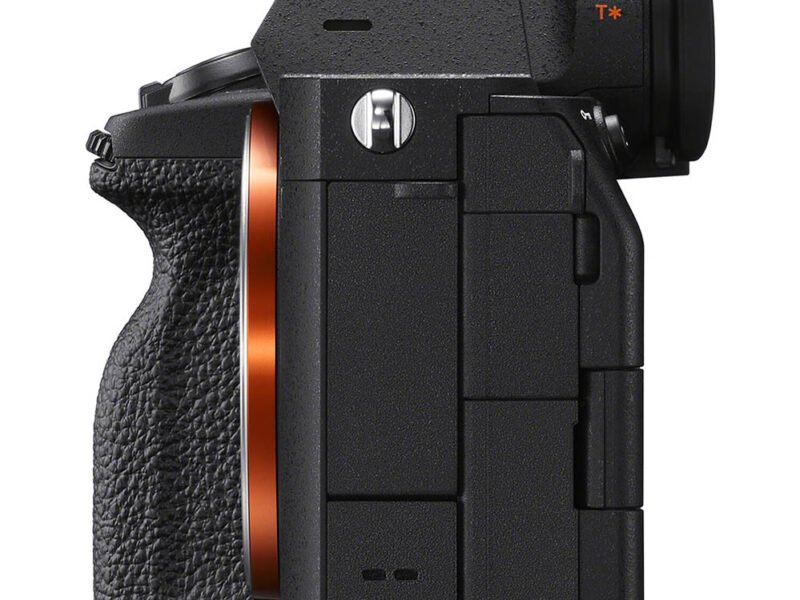
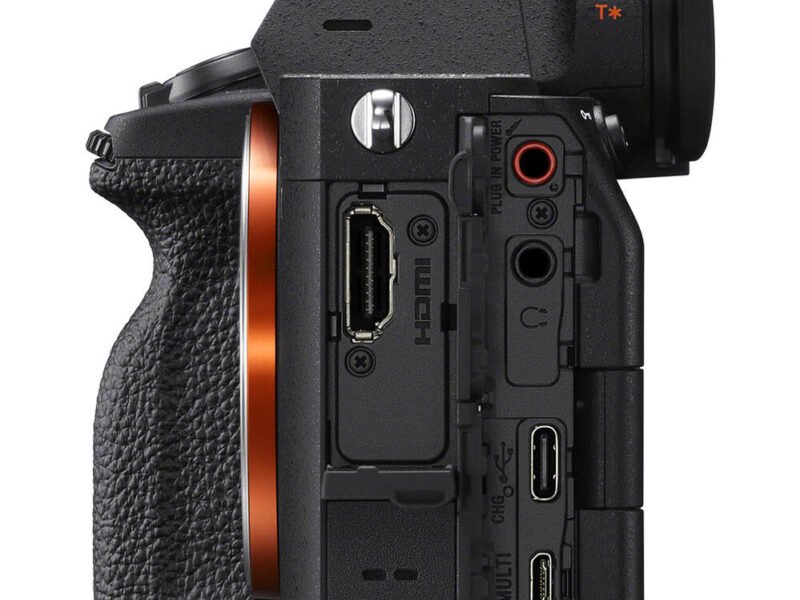

If you look more closely at the two bodies you will spot a couple of key differences.
The first difference is the exposure compensation dial. This is clearly marked on the a7S III but on the a7IV this dial is completely blank. However, its blank for a reason as it can be fully customized in-camera.
The second difference is that the a7IV gains a new secondary dial found underneath the main P/S/A/M dial. This new dial allows you to quickly select between the Still/Movie/S&Q modes, on the a7S III these are found on the single dial.

The new dial on the a7IV also has an extra trick up its sleeve. As each mode can be assigned different customizations, button assignments and exposure settings like aperture and shutter speed. On the a7S III if you often jumped between video and stills, you would need to change your settings each time which was quite tedious.
Electronic Viewfinder and LCD Display
When you look through the electronic viewfinder of the a7S III you’ll be looking at a superb image with 9.44M dots of resolution, a magnification of 0.9x (adjustable) and an eyepoint of 25mm.
The a7IV on the other-hand drops down to 3.68 million dots, 0.78x magnification and a 23mm eye point.
Both viewfinders have a maximum refresh rate of 100Hz (PAL) or 120Hz (NTSC).

Both cameras share the same 2.95 inch (3.0-type) wide TFT rear LCD display but the a7S III has a higher resolution of 1.44M dots vs 1.04M dots on the a7 IV. Both monitors are multi-angle and touch sensitive.

Memory Cards
Both cameras have two memory cards slots that allow you to roll-over to a second card when the first is full, or shoot to both cards simultaneously, or shoot images to one card and video to the other.
The a7S III support CFexpress Type-A and UHS-II SD cards in both card slots (just not at the same time).
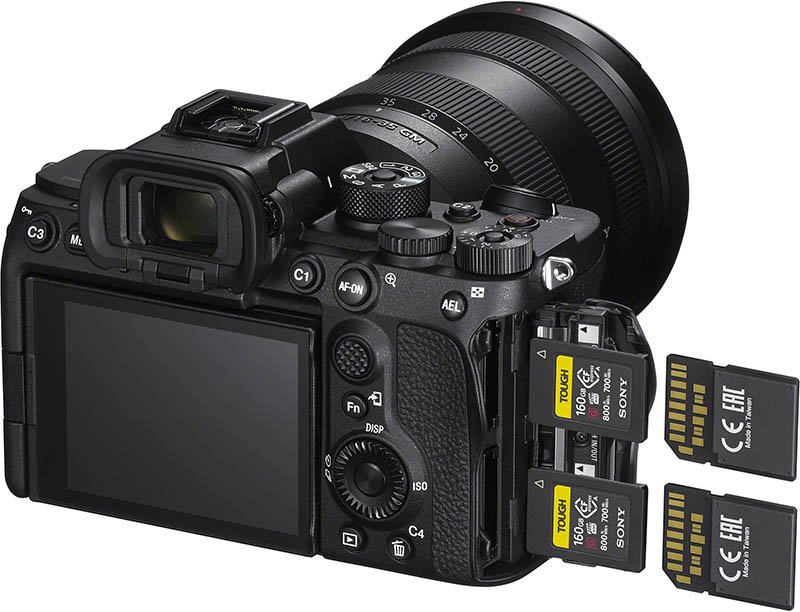
The a7IV supports UHS-II cards in both slots and CFexpress type A cards but these are only supported in slot 1.
You might find my Sony A7IV Memory Card Guide or my Sony A7S III Memory Card Guide helpful if you do decide to buy either of these cameras.
Connectivity
Both cameras can be shot tethered via their USB Type-C port that facilitates high-speed PC Remote transfer of large RAW data files, so you can quickly review images on a PC and continue shooting without delay.
However, whereas the a7S III supports SuperSpeed USB 5 Gbps (USB 3.2), the a7IV supports SuperSpeed USB 10 Gbps (USB 3.2).
Both cameras support a wired LAN connection if you purchase a LAN to USB C adapter.
5GHz and 2.4GHz wireless bands are also supported by both cameras along with Bluetooth Standard Ver. 4.1 (2.4 GHz band).

The Multi Interface (MI) Shoe that enables cable-less connection, directly transferring the digital audio signal for high-quality sound without degradation, while also supplying power and eliminating concerns about mic batteries is present on both cameras.

There’s a full size HDMI port along with a 3.5mm microphone and headphone terminals.
Both cameras are compatible with the same VG-C4EM battery grip that supports two NP-FZ100 batteries.
Live Streaming
Although the Sony a7S III supports live streaming it does require the use of Sony’s Imaging Edge Webcam software and the resolution is limited to 1,024 × 576 pixels.
With the a7IV you just need to connect the camera to a computer or smartphone via USB, then select “Live Stream (USB Streaming)”.

There are four options for USB streaming resolution & frame rate: 4K (2160) 15p / HD (1080) 60p / HD (1080) 30p and HD (720) 30p. You can also record internally while streaming just in case you lose your connection.
Firmware Updates
If you need to update the firmware of the a7S III then you have to connect the camera to your computer via USB. For Mac OS users this is a nightmare as it triggers security flags and can be very difficult to install.
Thankfully it is now possible to update the Sony a7IV firmware via memory card. You simply download the firmware onto a memory card and insert this into slot 1 to perform the update through the setup menu.
Price
The a7S III has an MRRP of: $3,498.00 / £3,799.00
The a7IV has an MRRP of: $2,498.00 / £2,399.00
I don’t think you need me to do the math, the a7S III is the more expensive camera by around $1000 US dollars.
Summary
Despite many similarities there are also many differences between these two Sony Alpha cameras.
As mentioned at the start of this article, the Alpha a7S III is designed for video shooters whereas the a7IV is more of a hybrid camera that aims to please both camps.
For stills shooters the 33 MP sensor in the a7 IV is the clear winner but it also offers video shooters some great features such as 4k 30p without a crop, 10-bit internal recording, S-Log2, S-Log3, HLG, S-Cinetone, breathing compensation and focus maps.
The a7S III offers much higher ISO performance, 4k 120p (with a small 1.1x crop), and 4k up to 60p without a crop, 240p Full HD, 16-bit RAW via the HDMI output.
The a7S III also has that superb 9.44M dot EVF vs 3.68 million dots for the a7 IV.
If your primary focus is video then you probably already know that the a7S III is the camera that you’d like in your gear bag.
But if you are a hybrid shooter then the a7 IV is probably going to suit you better, allowing you to shoot some amazing stills but also grab some fantastic video when the need arrises.
Complete Specification Comparison
I don’t like to leave stones unturned so here’s the complete specification comparison between the two cameras.
Body
| Sony A7 IV | Sony A7S III | |
|---|---|---|
| Body Type | Mirrorless | Mirrorless |
| Body Material | Magnesium alloy | Magnesium alloy |
| Lens Mount | Sony E-mount | Sony E-mount |
| Lens Compatibility | Sony E-mount lenses | Sony E-mount lenses |
Image Sensor
| Sony A7 IV | Sony A7S III | |
|---|---|---|
| Aspect Ratio | 3:2 | 3:2 |
| Number of Pixels (Effective) | Approx. 33.0 megapixels | 12.1 megapixels |
| Number of Pixels (Total) | Approx. 34.1 megapixels | 12.9 megapixels |
| Sensor Type | 35 mm full frame (35.9 x 23.9 mm), Back-Illuminated Exmor R CMOS sensor | 35 mm full frame (35.6 × 23.8 mm), Back-Illuminated Exmor R® CMOS sensor |
| Anti-Dust System | Yes (Charge protection coating on optical filter and image sensor shift mechanism) | Yes (Charge protection coating on Optical Filter and ultrasonic vibration mechanism) |
Still Images
| Sony A7 IV | Sony A7S III | |
|---|---|---|
| Recording Format | JPEG (DCF Ver. 2.0, Exif Ver. 2.32, MPF Baseline compliant), HEIF (MPEG-A MIAF compliant), RAW (Sony ARW 4.0 format compliant) | JPEG (DCF Ver. 2.0, Exif, Ver. 2.32, MPF Baseline-compliant), HEIF (MPEG-A MIAF compliant), RAW (Sony ARW 4.0 format-compliant) |
| Image Size (Pixels) (3:2) | 35 mm full frame L : 7008 x 4672 (33 M), M : 4608 x 3072 (15 M), S : 3504 x 2336 (8.2 M), APS-C M : 4608 x 3072 (15 M), S : 3504 x 2336 (8.2 M) | 35-mm full frame L: 4240 x 2832 (12 M), M: 2768 x 1848 (5.1 M), S: 2128 x 1416 (3.0 M), APS-C L: 2768 x 1848 (5.1 M), M: 2128 x 1416 (3.0 M), S: 1376 x 920 (1.3 M) |
| Image Size (Pixels) (16:9) | 35 mm full frame L : 7008 x 3944 (28 M), M : 4608 x 2592 (12 M), S : 3504 x 1968 (6.9 M), APS-C M : 4608 x 2592 (12 M), S : 3504 x 1968 (6.9 M) | 35-mm full frame L: 4240 x 2384 (10 M), M: 2768 x 1560 (4.3 M), S: 2128 x 1200 (2.6 M), APS-C L: 2768 x 1560 (4.3 M), M: 2128 x 1200 (2.6 M), S: 1376 x 776 (1.1 M) |
| Image Quality Modes | RAW (Compressed / Lossless Compressed / Uncompressed), JPEG (Extra fine / Fine / Standard / Light), HEIF (4:2:0 / 4:2:2) (Extra fine / Fine / Standard / Light), RAW & JPEG, RAW & HEIF | RAW (Compressed / Uncompressed), JPEG (Extra fine / Fine / Standard), HEIF(4:2:0 / 4:2:2) (Extra fine / Fine / Standard), RAW & JPEG, RAW & HEIF |
| Picture Effect | ||
| Creative Look | ST, PT, NT, VV, VV2, FL, IN, SH, BW, SE, Custom Look (1-6) | ST, PT, NT, VV, VV2, FL, IN, SH, BW, SE, Custom Look (1-6) |
| Dynamic Range Functions | Off, Dynamic Range Optimizer | Off, Dynamic Range Optimizer (Auto/Level (1-5)) |
| Color Space | sRGB standard (with sYCC gamut), Adobe RGB standard and Rec. ITU-R BT.2100 standard (BT.2020 gamut) | sRGB standard (with sYCC gamut), Adobe RGB standard and Rec. ITU-R BT.2100 standard (BT.2020 gamut). (compatible with TRILUMINOS Color) |
| 14bit RAW | Yes | Yes |
| Uncompressed RAW | Yes | Yes |
| Aspect Ratio Options | 3:2, 16:9, 4:3, 1:1 | 3:2, 16:9, 4:3, 1:1 |
Movie Recording
| Sony A7 IV | Sony A7S III | |
|---|---|---|
| Recording Format | XAVC S, XAVC HS | XAVC S, XAVC HS |
| Video Compression | XAVC S: MPEG-4 AVC/H.264, XAVC HS: MPEG-H HEVC/H.265 | XAVC S: MPEG-4 AVC/H.264, XAVC HS: MPEG-H HEVC/H.265 |
| Audio Recording Format | LPCM 2 ch (48 kHz 16 bit), LPCM 2 ch (48 kHz 24 bit), LPCM 4 ch (48 kHz 24 bit), MPEG-4 AAC-LC 2 ch | XAVC S: LPCM 2ch, LPCM 2ch (48 kHz 16 bit), LPCM 2ch (48 kHz 24 bit), LPCM 4ch(48 kHz 24 bit), MPEG-4 AAC-LC 2ch |
| Color Space | Rec. ITU-R BT.2100 standard compatible (BT.2020 gamut) | Rec. ITU-R BT.2100 standard compatible (BT.2020 gamut). (compatible with TRILUMINOS Color) |
| Picture Effect | ||
| Creative Style | ||
| Picture Profile | Yes (Off / PP1-PP11) Parameters: Black level, Gamma (Movie, Still, S-Cinetone, Cine1-4, ITU709, ITU709 [800%], S-Log2, S-Log3, HLG, HLG1-3), Black Gamma, Knee, Color Mode, Saturation, Color Phase, Color Depth, Detail, Copy, Reset | Yes (Off/PP1-PP10) Parameters: Black level, Gamma (Movie, Still, S-Cinetone, Cine1-4, ITU709, ITU709 [800%], S-Log2, S-Log3, HLG, HLG1-3), Black Gamma, Knee, Color Mode, Saturation, Color Phase, Color Depth, Detail, Copy, Reset |
| Slow & Quick Motion (Shooting Frame Rate) | NTSC mode: 1 fps, 2 fps, 4 fps, 8 fps, 15 fps, 30 fps, 60 fps, 120 fps, PAL mode: 1 fps, 2fps, 3fps, 6fps, 12fps, 25fps, 50fps, 100fps | NTSC mode: 1fps, 2fps, 4fps, 8fps, 15fps, 30fps, 60fps, 120fps, 240fps, PAL mode: 1fps, 2fps, 3fps, 6fps, 12fps, 25fps, 50fps, 100fps, 200fps* details of frame rate |
| Movie Functions | Audio Level Display, Audio Rec Level, PAL/NTSC Selector, Proxy Recording (1280 x 720 (Approx. 6 Mbps), 1920 x 1080 (Approx. 9 Mbps), 1920 x 1080 (Approx. 16 Mbps)), TC/UB, Auto Slow Shutter, Gamma Disp. Assist | Audio Level Display, Audio Rec Level, PAL/NTSC Selector, Proxy Recording (1280 x 720 [6 Mbps], 1920 x 1080 [9 Mbps], 1920 x 1080 [16 Mbps]), TC/UB, Auto Slow Shutter, Gamma Disp. Assist, RAW Output(HDMI) |
Recording System
| Sony A7 IV | Sony A7S III | |
|---|---|---|
| Location Information Link From Smartphone | Yes | Yes |
| Media | SD memory card, SDHC memory card (UHS-I/II compliant), SDXC memory card (UHS-I/II compliant), CFexpress Type A memory card | SD memory card, SDHC memory card (UHS-I/II-compliant), SDXC memory card (UHS-I/II-compliant), CFexpress Type A memory card |
| Memory Card Slot | SLOT1: Multi slot for SD (UHS-I/II compliant) memory card / CFexpress Type A card, SLOT2: Slot for SD (UHS-I/II compliant) memory card | SLOT1: Multi slot for SD (UHS-I/II-compliant) memory card/CFexpress Type A card, SLOT2: Multi slot for SD (UHS-I/II-compliant) memory card/CFexpress Type A card |
| Recording Mode on Two Memory Cards | Simult. Rec, Sort, Auto Switch Media, Copy | Simult. Rec, Sort, Auto Switch Media, Copy |
Noise Reduction
| Sony A7 IV | Sony A7S III |
|---|---|
| Long exposure NR: On/Off, available at shutter speeds longer than 1 s, High ISO NR: Normal / Low / Off | Long exposure NR: On/Off, available at shutter speeds longer than 1 s, High ISO NR: Normal / Low / Off |
White Balance
| Sony A7 IV | Sony A7S III | |
|---|---|---|
| White Balance Modes | Auto / Daylight / Shade / Cloudy / Incandescent / Fluorescent / Flash / Underwater / Color Temperature (2500 to 9900 K) & color filter / Custom | Auto / Daylight / Shade / Cloudy / Incandescent / Fluorescent / Flash / Underwater / Color Temperature (2500 to 9900K) & color filter / Custom |
| Shutter AWB Lock | Yes (Shut. Halfway Down / Cont. Shooting / Off) | Yes (Shut. Halfway Down / Cont. Shooting / Off) |
Focus
| Sony A7 IV | Sony A7S III | |
|---|---|---|
| Focus Type | Fast Hybrid AF (phase-detection AF / contrast-detection AF) | Fast Hybrid AF (phase-detection AF / contrast-detection AF) |
| Focus Sensor | Exmor R® CMOS sensor | Exmor R® CMOS sensor |
| Focus Point | 35 mm full frame: 759 points (phase-detection AF), APS-C mode with FF lens: 713 points (phase-detection AF), with APS-C lens: 575 points (phase-detection AF) / 425 points (contrast-detection AF) | 35-mm full frame: 759 points (phase-detection AF), APS-C mode with FF lens: 345 points (phase-detection AF), with APS-C lens: 285 points (phase-detection AF) / 425 points (contrast-detection AF) |
| Focus Sensitivity Range | EV-4 to EV20 (ISO100 equivalent with F2.0 lens attached) | EV-6 to EV20 (ISO 100 equivalent with F2.0 lens attached) |
| Focus Mode | AF-A (Automatic AF), AF-S (Single-shot AF), AF-C (Continuous AF), DMF (Direct Manual Focus), Manual Focus | AF-A (Automatic AF), AF-S (Single-shot AF), AF-C (Continuous AF), DMF (Direct Manual Focus), Manual Focus |
| Focus Area | Wide / Zone / Center Fix / Spot / Expand Spot / Tracking | Wide / Zone / Center / Flexible Spot / Expanded Flexible Spot / Tracking |
| Eye-AF | [Still images] Human (Right/Left Eye Select) / Animal (Right/Left Eye Select) / Bird, [Movie] Human (Right/Left Eye Select) / Animal (Right/Left Eye Select) / Bird | [Still images] Human (Right/Left Eye Select) / Animal, [Movie] Human (Right/Left Eye Select) |
| Other Features | Predictive control, Focus lock, AF Track Sens. (Still), AF Subj. Shift Sensitivity (Movie), AF Transition Speed (Movie), Switch V/H AF Area, AF Area Regist., Circ. of Focus Point, Focus Map (Movie), AF Assist (Movie) | Predictive control, Focus lock, AF Track Sens. (Still), AF Subj. Shift Sensitivity (Movie), AF Transition Speed (Movie), Switch V/H AF Area, AF Area Regist., Circ. of Focus Point |
| AF Illuminator | Yes (with Built-in LED type) | Yes (with built-in LED type) |
| AF Illuminator Range | Approx. 0.3 m / 0.98 ft (with FE 28-70 mm F3.5-5.6 OSS lens attached) | Approx. 0.3 m / 0.98 ft (with FE 28-70 mm F3.5-5.6 OSS lens attached) |
| Focus Type with LA-EA3 (sold separately) | Phase-detection | Phase-detection |
Exposure
| Sony A7 IV | Sony A7S III | |
|---|---|---|
| Metering Type | 1200-zone evaluative metering | 1200-zone evaluative metering |
| Metering Sensor | Exmor R CMOS sensor | Exmor R® CMOS sensor |
| Metering Sensitivity | EV-4 to EV20 (at ISO100 equivalent with F2.0 lens attached) | EV -3 to EV 20 (at ISO100 equivalent with F2.0 lens attached) |
| Metering Mode | Multi-segment, Center-weighted, Spot (Standard / Large), Entire Screen Avg., Highlight | Multi-segment, Center-weighted, Spot, Spot Standard/Large, Entire Screen Avg., Highlight |
| Exposure Compensation | +/- 5.0 EV (1/3 EV, 1/2 EV steps selectable) | +/- 5.0EV (1/3 EV, 1/2 EV steps selectable) (with exposure compensation dial: +/- 3EV [1/3 EV steps]) |
| Exposure Bracketing | Bracket: Cont., Bracket: Single, 3/5/9 frames selectable. (Ambient light, Flash light) | Bracket: Cont., Bracket: Single, 3/5/9 frames selectable. (Ambient light, Flash light) |
| AE Lock | Locked when shutter button is pressed halfway. Available with AE lock button. (On/Off/Auto) | Locked when shutter button is pressed halfway. Available with AE lock button. (On/Off/Auto) |
| Exposure Modes | [Still images] Intelligent Auto (Auto) / Program Auto (P) / Aperture Priority (A) / Shutter Priority (S) / Manual Exposure (M), [Movie] Intelligent Auto (Auto) / Program Auto (P) / Aperture Priority (A) / Shutter Priority (S) / Manual Exposure (M) / Flexible Exp. Mode, [Slow & Quick Motion] Intelligent Auto (Auto) / Program Auto (P) / Aperture Priority (A) / Shutter Priority (S) / Manual Exposure (M) / Flexible Exp. Mode | AUTO(iAuto), Programmed AE (P), Aperture priority (A), Shutter-speed priority (S), Manual (M), Movie (Programmed AE (P) / Aperture priority (A) / Shutter-speed priority (S) / Manual (M) / Flexible Exp. Mode), Slow & Quick Motion (Programmed AE (P) / Aperture priority (A) / Shutter-speed priority (S) / Manual (M) / Flexible Exp. Mode) |
| ISO Sensitivity (Recommended Exposure Index) | Still images: ISO 100-51200 (ISO numbers from 50 to 204800 can be set as expanded ISO), AUTO (ISO 100-12800, selectable lower limit and upper limit), Movies: ISO 100-51200 equivalent (ISO numbers up to 102400 can be set as expanded ISO), AUTO (ISO 100-12800, selectable lower limit and upper limit) | Still images: ISO 80–102400 (ISO numbers up from ISO 40 to ISO 409600 can be set as expanded ISO range.), Movies: ISO 80–102400 equivalent (ISO numbers up to ISO 409600 can be set as expanded ISO range.) |
| Anti Flicker Shooting | Yes | Yes |
| Scene Selection | – | – |
Viewfinder
| Sony A7 IV | Sony A7S III | |
|---|---|---|
| Viewfinder Type | 1.3 cm (0.5 type) electronic viewfinder (Quad-VGA OLED) | 1.6 cm (0.64 type) electronic viewfinder (color) |
| Number of Dots | 3 686 400 dots | 9 437 184 dots |
| Field Coverage | 100% | 100% |
| Magnification | Approx. 0.78x (with 50 mm lens at infinity, -1m) | Approx. 0.90x (with 50-mm lens at infinity, -1m-1) |
| Dioptre Adjustment | -4.0 to +3.0 m-1 | -4.0 to +3.0 m-1 |
| Eye Point | Approx. 23 mm from the eyepiece lens, 18.5 mm from the eyepiece frame at -1m-1 (CIPA standard) | Approx. 1 inch from the eyepiece lens, 1 inch from the eyepiece frame at -1m-1 (CIPA standard) |
| Finder Frame Rate Selection | STD 60 fps / HI 120 fps | NTSC mode: STD 60fps / HI 120fps, PAL mode: STD 50fps / HI 100fps |
| Display Function | Histogram, Real-time image-adjustment display, Digital level gauge, Grid line, Focus check, Peaking MF, Zebra, Movie marker, Emphasized display during REC | Histogram, Real-time image-adjustment display, Digital level gauge, Grid line, Focus check, Peaking MF, Zebra, Movie marker, Emph disp dur REC |
LCD Screen
| Sony A7 IV | Sony A7S III | |
|---|---|---|
| Monitor Type | 2.95 inch (3.0-type) wide type TFT | 2.95 inch (3.0-type) wide type TFT |
| Number of Dots | 1 036 800 dots | 1,440,000 dots |
| Touch Panel | Yes | Yes |
| Brightness Control | Manual (5 steps between -2 and +2), Sunny Weather mode | Manual (5 steps between -2 and +2), Sunny Weather mode |
| Adjustable Angle | Opening Angle: Approx. 176 °., Rotation Angle: Approx. 270 °. | Opening Angle: Approx. 176 deg., Rotation Angle: Approx. 270 deg. |
| Focus Magnifier | Yes, Focus Magnifier (35 mm full frame: 5.5x / 11.0x, APS-C: 3.7x / 7.3x) | Yes, Focus Magnifier (35-mm full frame: 2.1x / 4.1x, APS-C: 1.5x / 3.0x) |
Other Features
| Sony A7 IV | Sony A7S III | |
|---|---|---|
| Clear Image Zoom | Still images: Approx. 2x, Movies: Approx. 1.5x (4K), Approx. 2x (HD) | Still images: Approx. 2x, Movies: Approx. 1.5x (4K), Approx. 2x (HD) |
| Digital Zoom | Smart zoom (Still images): 35 mm full frame: M: approx. 1.5x, S: approx. 2x, APS-C: S: approx. 1.3x, Digital zoom (Still images): 35 mm full frame: L: approx. 4x, M: approx. 6x, S: approx. 8x, APS-C: M: approx. 4x, S: approx. 5.3x, Digital zoom (Movie): 35 mm full frame: approx. 4x, APS-C: approx. 4x | Smart zoom (Still images):35-mm full frame: M:Approx. 1.5x, S: Approx. 2x, APS-C: M: Approx. 1.3x, S: Approx. 2x, Digital zoom (Still images): 35-mm full frame: L: Approx. 4x, M: Approx. 6.1x, S: Approx. 8x, APS-C: L:Approx. 4x, M: Approx. 5.2x, S: Approx. 8x, Digital zoom (Movie): 35-mm full frame: Approx. 4x, APS-C: Approx. 4x |
| Face Detection | Modes: Face/Eye Priority in AF, Face Priority in Multi Metering, Regist. Faces Priority | Face Priority in AF, Face Priority in Multi Metering, Regist. Faces Priority |
| Self-Portrait Self-Timer | Yes | Yes |
Shutter
| Sony A7 IV | Sony A7S III | |
|---|---|---|
| Type | Electronically-controlled, vertical-traverse, focal-plane type | Electronically controlled, vertical-traverse, focal-plane type |
| Shutter Speed | Still images: 1/8000 to 30 s, Bulb, Movies (NTSC mode): 1/8000 to 1/4 (1/3 steps), up to 1/60 in AUTO mode (up to 1/30 in Auto slow shutter mode), Movies (PAL mode): 1/8000 to 1/4 (1/3 steps), up to 1/50 in AUTO mode (up to 1/25 in Auto slow shutter mode) | Still images: 1/8000 to 30 s, Bulb, Movies: 1/8000 to 1/4 (1/3 steps), up to 1/60 in AUTO mode (up to 1/30 in Auto slow shutter mode) |
| Flash Sync. Speed | 1/250 s (35 mm full frame), 1/320 s (APS-C) | 1/250 s (35 mm full frame), 1/320 s (APS-C) |
| Electronic Front Curtain Shutter | Yes (ON/OFF) | Yes (ON/OFF) |
| Silent Shooting | Yes (ON/OFF) | Yes (ON/OFF) |
Image Stabilization
| Sony A7 IV | Sony A7 III | |
|---|---|---|
| Type | Image Sensor-Shift mechanism with 5-axis compensation (Compensation depends on lens specifications) | Image Sensor-Shift mechanism with 5-axis compensation (compensation depends on lens specifications) |
| Compensation Effect | 5.5 stops (based on CIPA standard. Pitch/yaw shake only. With Planar T* FE 50 mm F1.4 ZA lens mounted. Long exposure NR off.) | 5.5 stops (based on CIPA standard. Pitch/yaw shake only. With Planar T* FE 50mm F1.4 ZA lens mounted. Long exposure NR off.) |
Flash Control
| Sony A7 IV | Sony A7S III | |
|---|---|---|
| Control | Pre-flash TTL | |
| Flash Compensation | +/- 3.0 EV (switchable between 1/3 and 1/2 EV steps) | +/- 3.0 EV (switchable between 1/3 and 1/2 EV steps) |
| Flash Modes | Flash off, Autoflash, Fill-flash, Slow Sync., Rear Sync., Red-eye reduction (on/off selectable), Wireless12, Hi-speed sync. | Flash off, Autoflash, Fill-flash, Slow Sync., Rear Sync., Red-eye reduction (on/off selectable), Wireless, Hi-speed sync. |
| External Flash Compatibility | Sony α System Flash compatible with Multi Interface Shoe, attach the shoe adaptor for flash compatible with Auto-lock accessory shoe | Sony α System Flash compatible with Multi Interface Shoe, attach the shoe adapter for flash compatible with Auto-lock accessory shoe |
| FE Level Lock | Yes | Yes |
| Wireless Control | Yes (Light signal: Available with Fill-flash, Slow Sync., Hi-speed sync. / Radio signal: Available with Fill-flash, Rear Sync., Slow Sync., Hi-speed sync.) | Yes (Light signal: Available with Fill-flash, Slow Sync., Hi-speed sync. / Radio signal: Available with Fill-flash, Rear Sync., Slow Sync., Hi-speed sync.) |
Drive
| Sony A7 IV | Sony A7S III | |
|---|---|---|
| Drive Modes | Single Shooting, Continuous shooting (Hi+/Hi/Mid/Lo selectable), Self-timer, Self-timer (Cont.), Bracket: Single,Bracket: Cont., White Balance bracket, DRO bracket | Single Shooting, Continuous shooting (Hi+/Hi/Mid/Lo selectable), Self-timer, Self-timer (Cont.), Bracket: Single, Bracket: Cont., White Balance bracket, DRO bracket |
| Continuous Drive Speeds (Approx. Max) | Continuous shooting: Hi+: 10 fps, Hi: 8 fps, Mid: 6 fps, Lo: 3 fps | Continuous shooting: Hi+: 10 fps, Hi: 8 fps, Mid: 6 fps, Lo: 3 fps |
| No. of Recordable Frames (Approx.) | JPEG Extra fine L: over 1000 frames, JPEG Fine L: over 1000 frames, JPEG Standard L: over 1000 frames, RAW: over 1000 frames, RAW & JPEG: over 1000 frames, RAW (Lossless Compressed): over 1000 frames, RAW (Lossless Compressed) & JPEG: over 1000 frames, RAW (Uncompressed): over 1000 frames, RAW (Uncompressed) & JPEG: 828 frames | JPEG Extra fine L: over 1000 frames, JPEG Fine L: over 1000 frames, JPEG Standard L: over 1000 frames, RAW: over 1000 frames, RAW & JPG: over 1000 frames, RAW (Uncompressed): over 1000 frames, RAW (Uncompressed) & JPG: over 1000 frames |
| Self-Timer | 10 s delay / 5 s delay / 2 s delay / Continuous self-time / Bracketing self-timer | 10-sec. delay / 5-s delay / 2-s delay / Continuous self-time / Bracketing self-timer |
Playback
| Sony A7 IV | Sony A7S III | |
|---|---|---|
| Photo Capture | Yes | Yes |
| Modes | Single (with or without shooting information Y RGB histogram & highlight / shadow warning), Index view, Enlarged display mode (L: 19.5x, M: 13.0x, S: 9.7x), Auto Review, Image orientation, Folder selection (Date / Still / Movie), Protect, Rating, Display as Group, Shot Mark (Movie), Divider Frame, Crop | Single (with or without shooting information Y RGB histogram & highlight / shadow warning), Index view, Enlarged display mode (L: 10.6x, M: 6.92x, S: 5.32x), Auto Review, Image orientation, Folder selection (Date / Still / Movie), Protect, Rating, Display as Group |
Interface
| Sony A7 IV | Sony A7S III | |
|---|---|---|
| PC Interface | Mass-storage / MTP | Mass-storage / MTP |
| Multi / Micro USB Terminal | Yes, Type-C® Terminal (SuperSpeed USB 10 Gbps [USB 3.2] compatible) | Yes, Type-C® Terminal (SuperSpeed USB 5 Gbps [USB 3.2] compatible) |
| NFC | – | – |
| Wireless LAN (Built-In) | Wi-Fi Compatible, 5GHz band in addition to the 2.4GHz | Wi-Fi Compatible, 5GHz band in addition to the 2.4GHz |
| Bluetooth | Yes (Bluetooth Standard Ver. 4.1 (2.4 GHz band)) | Yes (Bluetooth Standard Ver. 5.0 [2.4 GHz band]) |
| HD Output | HDMI Full-Size | HDMI Full-Size |
| Multi Interface Shoe | Yes | Yes |
| MIC Terminal | Yes (3.5 mm Stereo minijack) | Yes (3.5 mm Stereo minijack) |
| Headphone Terminal | Yes (3.5 mm Stereo minijack) | Yes (3.5 mm Stereo minijack) |
| Vertical Grip Connector | Yes | Yes |
| PC Remote | Yes | Yes |
USB Streaming
| Sony A7 IV | Sony A7S III | |
|---|---|---|
| Video Data Format | MJPEG, YUV420 | – |
| Video Resolution | 3840 x 2160 (15p / 12.5p) / 1920 x 1080 (60p / 50p / 30p / 25p) / 1280 x 720 (30p / 25p) | – |
| Audio Data Format | LPCM 2 ch (16 bit 48 kHz) | – |
| Simultaneous Internal Recording | Yes | – |
Audio
| Sony A7 IV | Sony A7S III | |
|---|---|---|
| Microphone | Built-in, stereo | Built-in, stereo |
| Speaker | Built-in, monaural | Built-in, monaural |
| Sony A7 IV | Sony A7S III |
|---|---|
| Exif Print, Print Image Matching III | Exif Print, Print Image Matching III |
Custom Functions
| Sony A7 IV | Sony A7S III |
|---|---|
| Custom key settings, My Menu, My Dial Settings, Reg Cust Shoot Set, Programmable Setting (Body 9 sets / memory card 12 sets) | Custom key settings, Programmable Setting (Body 3 sets / memory card 4 sets), My Dial Settings, My Menu, Reg Cust Shoot Set |
Lens Compensation
| Sony A7 IV | Sony A7S III |
|---|---|
| Peripheral Shading, Chromatic Aberration, Distortion, Breathing (Movie) | Peripheral Shading, Chromatic Aberration, Distortion |
Power
| Sony A7 IV | Sony A7S III | |
|---|---|---|
| Supplied Battery | One rechargeable battery pack NP-FZ100 | One rechargeable battery pack NP-FZ100 |
| Battery Life (Still Images) | Approx. 520 shots (Viewfinder) / approx. 580 shots (LCD monitor) (CIPA standard) | Approx. 510 shots (Viewfinder) / Approx. 600 shots (LCD monitor) (CIPA standard) |
| Battery Life (Movie Actual Recording) | Approx. 100 min (Viewfinder) / Approx. 110 min (LCD monitor) (CIPA standard) | Approx. 80 min (Viewfinder)/Approx. 95 min (LCD monitor) (CIPA standard) |
| Battery Life (Movie Continuous Recording) | Approx. 170 min (Viewfinder) / Approx. 175 min (LCD monitor) (CIPA standard) | Approx. 130 min (Viewfinder) / Approx. 135 min (LCD monitor) (CIPA standard) |
| Internal Battery Charge | Yes (Available with USB Type-C Terminal. USB Power Delivery compatible) | Yes (Available with USB Type-C Terminal. USB Power Delivery-compatible) |
| Power Consumption with Viewfinder | Still images: approx. 3.8 W (with FE 28-70 mm F3.5-5.6 OSS lens attached), Movies: approx. 5.7 W (with FE 28-70 mm F3.5-5.6 OSS lens attached) | Still images: Approx. 4.3 W (with FE 28–70-mm F3.5-5.6 OSS lens attached), Movies: Approx. 7.6 W (with FE 28–70-mm F3.5-5.6 OSS lens attached) |
| Power Consumption with LCD | Still images: approx. 3.4 W (with FE 28-70 mm F3.5-5.6 OSS lens attached), Movies: approx. 5.6 W (with FE 28-70 mm F3.5-5.6 OSS lens attached) | Still images: Approx. 3.3 W (with FE 28–70-mm F3.5-5.6 OSS lens attached), Movies: Approx. 7.3 W (with FE 28–70-mm F3.5-5.6 OSS lens attached) |
| USB Power Supply | Yes (Available with Multi/Micro USB Terminal or USB Type-C Terminal) | Yes (Available with USB Type-C Terminal. USB Power Delivery-compatible) |
Operating Temperature
| Sony A7 IV | Sony A7S III |
|---|---|
| 32 – 104 degrees F / 0 – 40 degrees C | 32 – 104 degrees F / 0 – 40 degrees C |
Size & Weight
| Sony A7 IV | Sony A7S III | |
|---|---|---|
| Weight With battery & Memory Card | Approx. 658 g (approx. 1 lb 7.3 oz) | Approx. 699 g (approx. 1 lb 8.7 oz) |
| Dimensions (W x H x D) | Approx. 131.3 mm x 96.4 mm x 79.8 mm, approx. 131.3 mm x 96.4 mm x 69.7 mm (From grip to monitor) (approx. 5 1/4 x 3 7/8 x 3 1/4 inches, approx. 5 1/4 x 3 7/8 x 2 3/4 inches (From grip to monitor) | Approx. 5 1/8 x 3 7/8 x 3 1/4 inches, Approx. 5 1/8 x 3 7/8 x 2 3/4 inches (FROM GRIP TO MONITOR), Approx. 128.9 mm x 96.9 mm x 80.8 mm, Approx. 128.9 mm x 96.9 mm x 69.7 mm (FROM GRIP TO MONITOR) |
What’s in the Box
| Sony A7 IV | Sony A7S III |
|---|---|
| Camera Body | Camera Body |
| AC adaptor & Power cord | AC adaptor & Power cord |
| Rechargeable Battery NP-FZ100 | Battery Charger: BC-QZ1 |
| Accessory shoe cap | Rechargeable Battery NP-FZ100 |
| Body cap | Accessory shoe cap |
| Eyepiece cup | Body cap |
| USB-A to USB-C cable (USB 3.2) | Eyepiece cup |
| Shoulder strap | USB-A to USB-C cable (USB 3.2) |
| Shoulder strap |
Sony A7 IV Guides & Resources
Sony A7 IV Forum & Facebook Group
If you are looking for further help and advice on the a7 IV or would simply like to share your photos and videos, then please head over to our friendly full-frame Forum. If you prefer Facebook then we also run the Sony A7 IV Shooters Group.




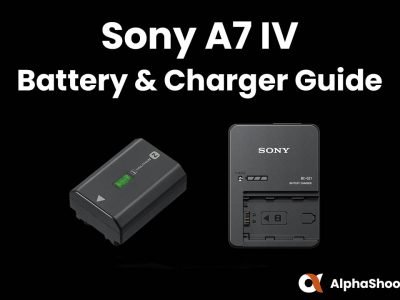
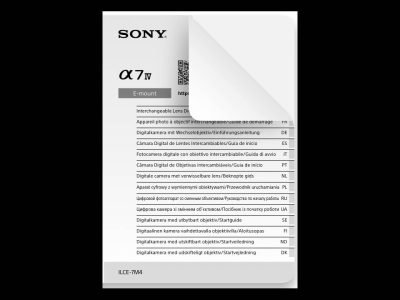
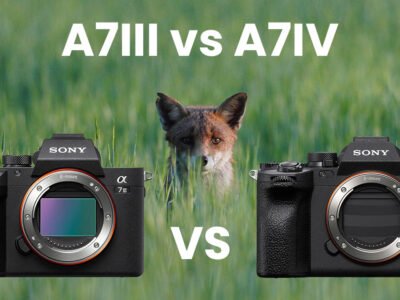
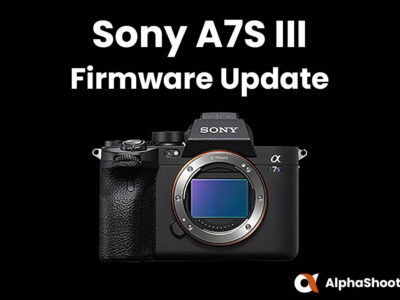
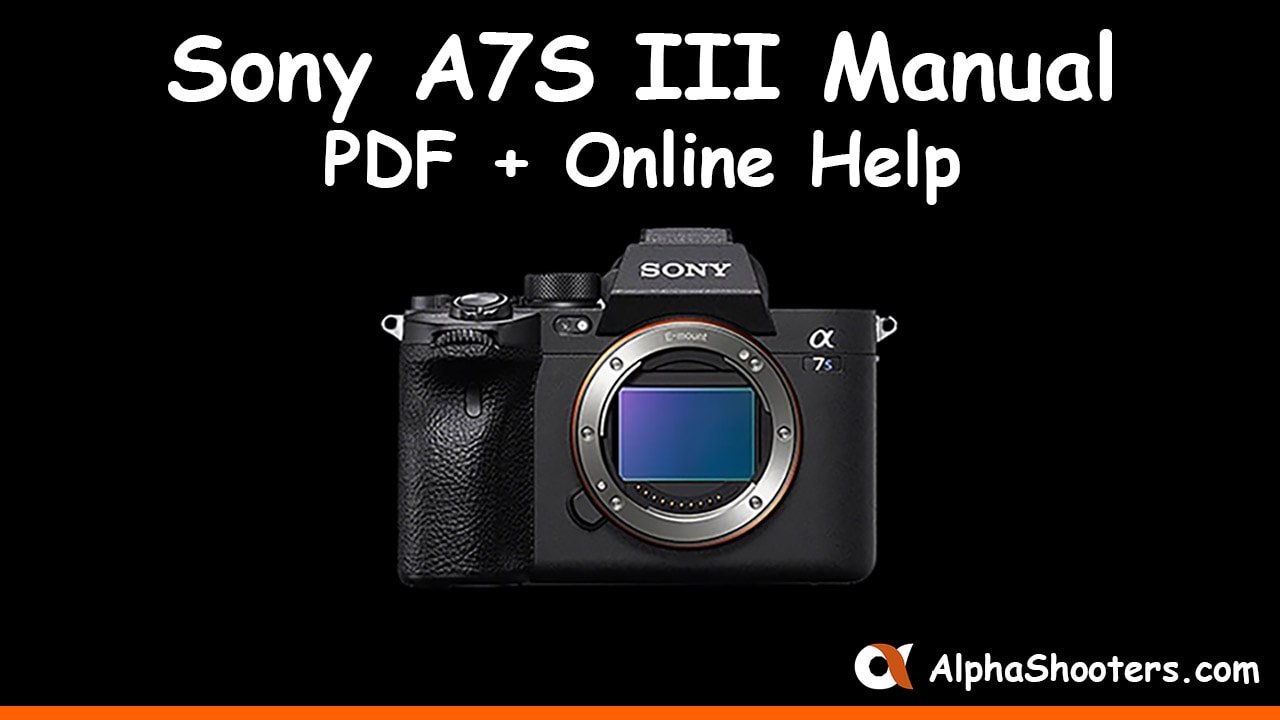
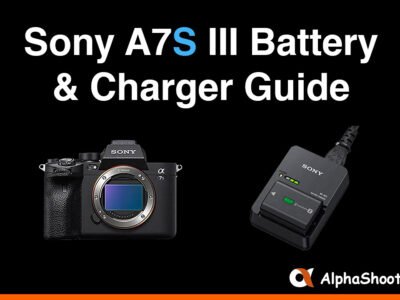
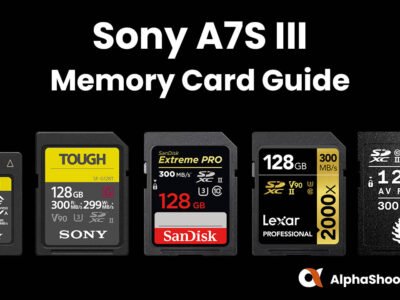


Leave a Reply